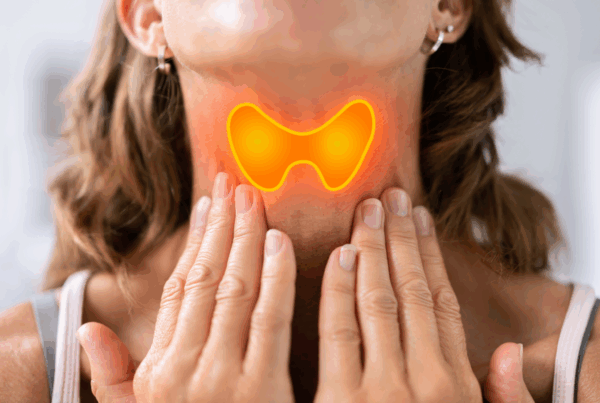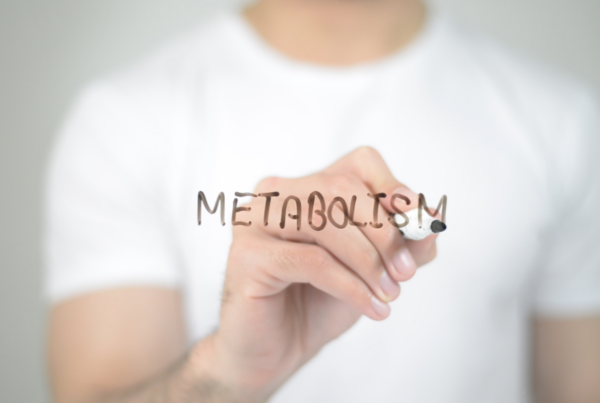
New Studies Reveal New Strategies For The Normal Cycling of Female Hormones
Natural Health Has Always Had The Solution, Now Science Reveals More Comprehensive Understandings
Although nearly 95% of all women between the ages of 18 and 50 experience unpleasant premenstrual symptoms (physical, emotional, and mental) it is NOT inherent within a woman’s body-blueprint to suffer each month prior to and during menstruation. So what does this alarming statistic mean?
Not all women experience the discomforts of PMS and other hormonal dysregulations during their fertility cycle. But, many of the women who do experience classic PMS symptoms such as moodiness, irritability, anger, insecure feelings, headaches, bloating, breast tenderness and food cravings; find that such discomforts can only be alleviated when they correct certain nutritional imbalances/deficiencies or correct other causes many of which are iatrogenic (antibiotics, birth control drugs, antidepressants). For such women, herbs and nutritional support are very effective when properly used to support the body’s innate desire to correct the various imbalances and bio-energetic congestions which are often the underlying causes of PMS.
The Natural Health/Holistic Model views the woman’s moon cycle as much more than changes in hormone ratios. Menses, by design, is a special “woman’s time.” It is time of whole body cleansing and being in sync with larger life cycles—the moon cycle of 28 days of waxing, gibbous, and waning. It is a time of renewing creativity: physically, emotionally, mentally, and spiritually. To fully appreciate the meaning of menses, a woman should not be battling headaches, cramping, feelings of rage, despair and low self esteem. The body’s innate blueprint does not call for suffering during menses. Thus PMS is the body’s perfect expression, doing the best it can under the circumstances, calling attention to needing assistance to perform optimally. It is a wake-up call that there are factors impacting the delicate and complex hormonal clockwork. When those factors are addressed, then the body can move into greater ease and have a smooth hormonal experience.
Estrogen Dominance: Most people know that PMS is some kind of hormonal imbalance or response to hormones. Science points to estrogen dominance where there is insufficient progesterone being produced by the ovaries and/or inability of the liver to effective break down estrogens. But what causes the imbalance? A diet lacking adequate Vitamin E complex, antioxidants, trace minerals, and essential
fatty acids? Is it birth control pills that disrupt aspects of the innate cycle? Is it growth hormones in commercial dairy products? Is it hormonal disruptors from cosmetics, mercury-dental fillings and environmental toxins? Is it pesticides disrupting the gut microbiota? Why can’t the body regulate itself and be adaptable the way Nature intended?
Could it be that environmental toxins are causing inflammation and cell receptor resistance, and thus hormones are lost, unfulfilled, unconnected, and cells unable to perform? And even worse, are unfulfilled hormones (unconjugated, un-methylated by the liver) causing trouble such as encouraging cell-proliferations (e.g. endometriosis, fibrocystic breast disease, ovarian cysts)?
With uncorrected PMS symptoms, there is a progression of influences that manifests as more serious concerns over time. Many women have PMS symptoms that start at menarche (first menses) in their teens. Uncorrected by the “body’s true self-cure mechanism,” the pattern continues to worsen with time. Is it really a surprise that in such a case, in the woman’s 20’s and 30’s an enlarged ovarian cyst develops, and in the 40’s there is endometriosis and fibroid tumors and hysterectomies? It all relates back to a hormonal imbalance and it all begs the question, “Why was there the initial hormonal imbalance? Here we will examine these issues in light of new scientific studies.
YEAR 2012. PMS OFFICIALLY LABELED A “MYTH” BY MODERN MEDICINE
Sounds like a joke, but it’s not.
A research team led by Dr. Sarah Romans, University of Otago, New Zealand, published in Gender Medicine reviewed 47 case studies that followed women’s moods across the menstrual cycle. Only 15% of the studies found that women tended to have “classic” PMS: moods that worsened as the menstrual period approached and lifted when menstruation occurred. An additional 38% found PMS that lasted into menstruation or another cycle phase, thus did not qualify as PMS. Thus, medical science is still reciting the old, “It’s all in your head” litany, and based on this meta-analysis. “PMS is a myth.”
The study renewed several debates about roles of women in various cultures, male/female stereotypes and became an affirmation that the natural health and human-approach to life is errant, lacking science. Here are the published results and conclusions:
Results: Of 47 English language studies identified, 18 (38.3%) found no association of mood with any MC phase; 18 found an association of negative mood in the premenstrual phase combined with another MC phase; and only 7 (14.9%) found an association of negative mood and the premenstrual phase. Finally, the remaining 4 studies (8.5%) showed an association between negative mood and a non-premenstrual phase. Considering the only 41 adequately powered studies, the same phase links were reported by 36.6%, 41.5%, and 13.5% of studies, respectively. Their diversity of methods (sampling, instruments, and cycle phase definitions) precluded a meta-analysis.
Conclusions: Taken together, these studies failed to provide clear evidence in support of the existence of a specific premenstrual negative mood syndrome in the general population. This puzzlingly widespread belief needs challenging, as it perpetuates negative concepts linking female reproduction with negative emotionality. Some issues that a savvy mind might point out are:
- This “sorta-meta-analysis” of other studies findings inevitably incorporates those studies’ flaws and that they never considered the right variables in the first place. “The truth of the matter” escapes discovery, but science, medicine, and the media can all agree that “non-scientific, ordinary people” are just hysterically claiming PMS is real as some kind of coping excuse.
- None of the 47 studies investigated cell membrane receptor sensitivity, or how other hormones such as cortisol (thus stress) factors into PMS, or thyroid how hormones impact the gestalt of the female life experience. [Big omission.]
- None of the studies accounted for the fact that the gut microbiota exert a powerful influence over estrogen and hormone metabolism.
- Since menses is basically a self-purification process, what is the body’s toxic burden (how full is the bucket?) and how functional is the liver?
- Looking at the same pieces of the puzzle without an understanding of the whole continues to lead to the same fragmented results.
Despite the continued position that PMS is all in your head, insurance systems recently added the ICD9 code of 625.4 for the condition but labeled it Premenstrual Tension, Menstrual Molimen and Premenstrual Dysphoric Disorder. Thus PMS is not a diagnostically discoverable disease or symptom state.
Comment: To date, the scientific PMS studies have failed to include the whole person and the personal “biochemical individuality,” the role of other hormones (thyroid hormones, epinephrine/norepinephrine), cell receptor dysfunction do to environmental toxicity, fluctuations in neuro-control and full regulatory expression of the neuron/neurotransmitter pathways; and the powerful impact that the gut microbiota have over estrogen balance. Further they are playing a “word game” by examining PMS as only a phenomenon occurring ‘right before menses’ and ignoring the impact of other cyclic symptoms such as cramping and discharges during ovulation, or emotional upheavals on day one of the menstrual flow. By fragmenting the 28-day moon cycle, the isolated parts are examed out of context resulting in results of fractional value.
General Conclusion: Until a holistic model is employed respecting biochemical individuality and the complete impact and variables of hormones and their metabolic processes, Science continues to do the “blind men describing an elephant” description of PMS. Once we understand that even mild fluctuations in hormonal systems can have a profound impact on one person and not another, then we’ll realize that the innate clockwork of hormonal metabolic regulation is intricately complex and individual.
Of course PMS is real and is consistently confirmed, time and time again, by individuals experiencing premenstrual variations and disruptions of their mental, emotional and physical well being.
In Natural Health, we say, “Help the body correct the cause of it’s symptoms and confusions, and it will heal itself.” Historically, adaptogenic herbsPMS. As Science brings out new insights about how the body regulates itself, we can expand our knowledge and natural-health insights to improve outcomes via a more comprehensive understands of the causes – the things that distrupt hormonal balance.
Some examples of supportive and adaptogenic herbs include:
- • Agoniada (Plumeria lancifoliata) – from the Portuguese texts, this herb is always associated with women-specific and menstrual and uterine support.
- • Tayuya (Trianosperma tayuya) – Portuguese texts cites support for female organs and premenstrual skin eruptions.
- • Dong Quai – Adaptogenic in helping provide phytoestrogens to support hormonal balance. Helps relieve symptoms such as occasional sleep disturbances, hot flashes, night sweats, and mild mood swings associated with PMS.
- • Pffafia – Also called Suma. An historic adaptogenic, rain forest herb used for thousands of years in Brazilian herbal traditions. Has earned the epithet, “Para Todo” – For All Things.
- • Blue Cohosh – A Native American botanical with a long history of supporting the normal female menstrual cycle. Also known for its antispasmodic properties.
- • Sarsaparilla – A Native American tonic for both male and female hormonal balance, supports normal purification processes.
Three Emerging, Chief Causes of PMS are:
- Altered Intestinal Microbiota
- Toxin Accumulation Resulting In Cell Membrane Inflammation
- Altered Brain Regulation of Neuroendocrine Activity
- Plus a gestalt of several other factors discussed here.
These three causes account for the majority (90%) of the body’s PMS symptom-expressions. The remaining 10% includes genetics, epigenetics, inherent defects in glands and tissues, and exacerbations by numerous contributors that predispose the brain and cellular responses to allow less than optimal function. Please note how all three ‘causes’ are features of advanced Natural Health perspectives and understandings and that there are no Rx drugs to effectively address this and help implement cure.
1. Gut Microbiota, Hormones, & PMS
Studies show that a root cause of PMS is an altered intestinal microbiome. More than a tangent contributor, the Natural Health model from Hippocrates’ All Health Begins In The Stomach, to modern day wisdom, “All Diseases Begin In The Stomach,” insist that the gut microbiota have a predominant role in determining health or dis-ease for an individual. The mechanisms are: 1) set point of inflammatory activity, 2) hormone conjugation and processing by microbes in the intestines with resorption of molecules into the bloodstream, 3) chemical messengers from the microbiota sent to the brain via the blood, and 4) electrical signals from the enteric nervous system, via the Vagus nerve, to the brain and immune system.
Acidophilus lactobacillus species break down the metabolites of estrogen. These metabolites communicate cellular messages to the hypothalamic/pituitary/pineal axis (serotonin, beta-endorphins) as well as ovaries and breast tissue to balance hormonal ebb and flow rhythms.
Quoting from the PACTTM (Probiotic Advanced Colonization Technique) seminar material taught in 2014-2015: “In the 21st Century, G.I. microbiota re-colonization is essential for optimal hormonal regulation. Intestinal microbial species have direct communication with the vaginal species. Though they are different microbiomes, they are sympathetic to each other, share many of the same species, and respond quickly to the presence of hormones. Thus candida overgrowth in one area often supports that overgrowth the other; and a healthy biodiversity in one area is supportive of the other. ”
Explaining the above, the “intestinal microbiota” are all the species of microbes that inhabit the human gastro-intestinal tract; and “microbiome” is all the DNA that makes up a human being and according to Science, this includes both the human, cellular DNA and the DNA of all the microbiota that are in and on the human body.
If the intestinal microbiota are dysbiotic, then the immune system’s innate response and brain-neurological oversight must ensure that the normal immunological vigilance (tendency to initiation normal inflammatory responses) must be elevated. When the “set point” of inflammation is elevated, then the female body will have greater prostaglandin expressions associated with menstrual cramps called dysmenorrhea. Vitamin E (the complete complex of 8 fractions) serves to modulate proper prostaglandin activity.
This newly discovered relationship between microbes and human metabolic self-regulation means that improving the gut microbiota biodiversity and body-regulatory species is an essential consideration for PMS remedial support. With it, there can be lasting improvement. Without it, symptoms soon return.
2. Normal Self-Purification Processes
An important causative influence for PMS is liver congestion that impairs the body’s self-purification processes at the cellular level. Many women report improved PMS symptoms after completing a Cellular Detoxification program that impacts the cellular metabolic activities (gluathione, methylation, membrane support), liver processes, and normal neurological self-purification activities.
In this regard, the liver’s efficient function is essential but also serves as a bellwether for general cell membrane functions (inter-cell signals to the immune system, fluidity, and receptor performance.)
Cell Membrane Damage: Toxins damage cell membranes by binding with the membranes or by causing free radical damage that excites the inflammation response. Damaged membranes no longer have hormone receptors that work right. This is the issue with the hormone-resistancies that can impact the mitochonria’s glucose uptake, the thyroid struggle when T4 does not effectively convert to T3), also impact the efforts the brain’s hormonal command center—the hypothalamus—that must properly communicate with the pituitary, thyroid, adrenal, and gonad glands. It’s not so much a hormone manufacturing situation as it is a cell membrane issue.
So the cell membrane is where PMS is really occurring. The cellular inflammation and membrane damage causes a failure in hormones to connect with receptors on the membrane and deliver their messages. So when the cell membranes can’t cooperate, the hormone system becomes imbalanced due to non-delivery of estrogen, progesterone, melatonin, testosterone, etc. Further, these hormones can “misbehave” when they do not dock and relieve themselves of their messages and cause symptoms from flushes of heat to abnormal cellular proliferations.
When the cell membranes (outer cell wall, mitochondrial membranes) are inflamed and don’t work right, the nutrients (glucose, oxygen) that fuel mitochondrial production of ATP have a hard time getting inside the cells. Scientists have cited that “a lack of ATP is a root cause of aging faster than normal” because when cellular energy is low, the cells and their organelles cannot repair their DNA (genetic code) and protect their telomeres.
DNA repair also requires placing a methyl group (CH3) on chromosomes that express normal responses often labeled as “diseases.” Inflamed membranes and free radical damage to DNA is cited as a root cause of why a person’s genetics would express a dread disease. The body needs access to its life code (called transcription) to maintain optimal cellular functions. Ultimately our bodies need optimal cellular health in order to have optimal body health.
Further, the lack of the body’s chief antioxidant, glutathione, and other antioxidants—catalase, superoxide dismutase, CoEnzyme Q-10) can allow the mitochondria to engage in a perpetual cycle of free radical destruction labeled by Dr. Pall as the “no/onoo cycle” in reference to the molecules involved. This vicious cycle inhibits proper ATP production (low energy), and also damages chromosomes—damage directly linked to unleashing diseases from within the body.
PMS is a Cell Membrane Issue! The key issue regarding PMS is cell membrane receptors that do not “receive” the hormonal messengers due to normal inflammation processes and/or trans-fats being incorporated into the membranes. Cell membranes that are damaged from free radicals and the inflammatory processes are unable to pass the hormonal message through to the intracellular cascades.
Mitochondrial membranes are affected and ATP (Adenosine Triphosphate) production suffers. Pesticides are a leading cause of cell membrane normal inflammation activities. Genetically Modified (GM or GMO) foods are a new culprit as they, and their glyphosate pesticide, wreak havoc on the intestinal microbiota and their chemical messages to the brain, ovaries, and uterus.
If the hypothalamus is inflamed due to environmental toxin exposure (pesticides, heavy metals, chemicals, mercury-amalgam dental fillings), then “command central” dysregulation occurs where the hypothalamus doesn’t perform correctly to tell the pituitary how to regulate the various endocrine glands and their hormonal output.
3. Neuro-Regulation / Neuro Amnesia
With so many PMS symptoms being neurological and neurotransmitter processes, it’s as if Nature were saying, “Pay attention, please. The brain has much to do with this.” Common neurotransmitter-based symptoms include: easily angered, anxiety, apathy, chocolate craving, confusion, depression, guilt, hopelessness, irritability, loneliness, low self esteem, moodiness, resentments, and stressed out feelings.
Neurotransmitter balance requires, among many things, nutrient molecules from foods and herbs. In the ‘command central’ position, brain functions help regulate hormonal processes and also because of feedback loops, is affected by hormones. For example, there are estrogen and progesterone receptors in the brain’s hippocampus and are synthesized in the brain. They are directly tied into emotions, memory, and body regulatory activities.
Today, we know that leaky gut means leaky brain, which is just one facet of the gut/brain connection, but here, the leaky blood/brain barrier means toxins and inflammatory molecules entering the brain and activating glial cells which, in performance of their duties may inhibit the normal neurotransmitter cascades. What this means is that silent inflammation in the brain can connect a significant portion of the brain’s neuron responses to stimuli (such as normal hormone—neurotransmitter cascades). Thus the coined term, “neuro-amnesia” which describes the fact that the brain’s oversight and regulation of body functions such as mood, hormone production, and hormone balance, can become impaired and ineffectual, and thus need “neuro-activation” to get the system jumpstarted.
This points directly to the need to support overall brain and neurotransmitter nutrition in setting the stage for the body to self-correct the PMS phenomenon.
Summary: Seven Key Supports
From this discussion, clinicians can design effective remedial support for women experiencing PMS, and most importantly, employ botanicals and nutrients that the body can use to facilitate genuine correction. Here are the key areas of endeavor. Comprehensive support of causes and contributors can empower the body with the molecules it is seeking to maintain female health in efficient and optimal working order.
- General female hormone adaptogenic support, ovaries, adrenal, thyroid, pituitary, hypothalamus
- Relative estrogen dominance (Progesterone low)
- Gut microboime normal health
- Efficient liver function
- Effective cellular purification processes [methylation, glutathione, antioxidants]
- Cell membrane fluidity
- Neurological (brain and mood) support [purification, functional nutrients]
———————————————
Disclaimer & Disclosure
The information and insights presented in this blog are for educational purposes only. The opinions are those of the author and not necessarily those
of Systemic Formulas, Inc. WellnessWiz Jack Tips is a retained consultant to Systemic Formulas, Inc.
Systemic Formula Considerations
- F+, Fpms, Ga, Gb, Gf, #1, DV3
- Femicrine, SpectraOne
- MBC, LGUT, ABC, FBR
- Ls, L, Lb, Wood Tonify/Sedate
- GCEL, MoRS, EPIC, ROX, Cellular Detox Packages
- VistaOne & Two, SpectraTwo, RPM
- Neurosyn, CALM







